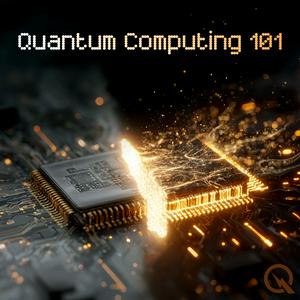Quantum-Classical Fusion: Dell and QuEra Unveil Hybrid Computing Milestone at SC25
This is your Quantum Computing 101 podcast.It’s Leo, Learning Enhanced Operator, here, reporting with the hum of liquid helium and the faint click of data racks somewhere in the background. Moments ago, I was watching a live feed from Supercomputing 2025 in Boston, and let me tell you—the future of quantum-classical hybrid computing is officially starting to look real.Picture this: sleek, chromium quantum processing units—QPUs—sitting right beside roaring Dell PowerEdge servers with NVIDIA GPUs. These are no longer separate worlds. This week, QuEra Computing and Dell Technologies unveiled a milestone demonstration that’s shifting the hybrid conversation from concept to practice. The setup, running in QuEra’s Boston facility, intertwines Dell’s best-in-class HPC infrastructure with QuEra’s neutral-atom quantum machines—machines that manipulate individual atoms into vast entangled webs, all orchestrated by Dell’s Quantum Intelligent Orchestrator. What’s dramatic here isn’t just technical integration, but the operational choreography: classical CPUs and GPUs tackle the well-trodden paths, while QPUs leap into the quantum realm when the landscape demands it.Hybrid workflows are no longer theory—they’re being stress-tested. For this showcase, they’re generating Greenberger–Horne–Zeilinger, or GHZ, states: these multi-qubit entangled states sit at the bleeding edge of quantum information science. A rush of ultra-cold atoms—each one a quantum switch—are shuffled dynamically across the processor. Imagine a chessboard where not only the pieces, but the very squares, rearrange themselves to give you optimal play. That’s qubit shuttling, a QuEra specialty. And when needed, multiple quantum gates fire in perfect parallel—like the world’s most synchronized symphony, invisible to our eyes but utterly precise.What’s compelling is that Dell and QuEra have created an orchestration engine, the Quantum Intelligent Orchestrator, that determines in real-time which parts of a workload get solved by classical hardware, and which spill over to quantum. Low latency, strong security, seamless data movement—it’s all there, forming a computing stack that could soon enter your nearest research lab, or even an enterprise data center.Hybrid solutions like this are the bridge to quantum’s practical future. They ensure that classical systems continue doing what they’re best at—handling vast datasets, running tried-and-true simulations—while quantum steps in for the deeply tangled, the massively parallel, the truly nonlinear. The sectors poised to benefit are everywhere: drug discovery, optimization, complex simulations, finance—the list expands each month, and now these hybrid platforms are lining up to deliver.If you’re as fascinated by the echoes between quantum entanglement and today’s ever-more networked world—where connections are everything—stay with me. I’m Leo, and that’s our time. If you have questions, ideas, or want a favourite topic unraveled on air, email me anytime at
[email protected]. Don’t forget to subscribe to Quantum Computing 101, and remember: this is a Quiet Please Production. Visit quiet please dot AI for more. Until next time—keep questioning reality.For more http://www.quietplease.aiGet the best deals https://amzn.to/3ODvOtaThis content was created in partnership and with the help of Artificial Intelligence AI


